Things To Do in The Cotswolds | Tourism Guide
The Cotswolds is a range of hills in west-central England, an area 25 miles (40 km) across and 90 miles (145 km) long.
Just outside the boundaries of this region are several major towns attractive to visitors – Stratford Upon Avon, birthplace of Shakespeare north of the region, Oxford east of the region and Bath to the south west. Attractive small towns and villages built of the underlying Cotswold stone (a type of limestone) characterise the area.
During the 13-15th centuries, the medieval period, native Cotswold sheep were famous throughout Europe for their heavy fleeces and high quality of wool. Cotswold wool commanded a high price and the wealth generated by the wool trade enabled wealthy traders to leave their mark by building fine houses and wonderful churches, known as “wool churches”. Even today, sheep on the hillside is one of the classic Cotswold images.
Overseas travellers will discover that the Cotswolds is an easily accessible destination while in London. It showcases what many consider the quintessential English countryside, complete with charming villages, historic churches, and serene landscapes.
Many people find that the best part of their day is enjoying a classic cream tea in a charming tea room, followed by a leisurely stroll through a quaint village or exploring local craft shops.
For the purposes of navigation, this page divides the geographical region of the Cotswolds into Southern Cotswolds, Central Cotswolds and Northern Cotswolds.
Traveling from London to the Cotswolds
The Cotswold region offers quite limited public transportation options. For convenience, most visitors will either need to drive a car or consider booking a leisurely tour on a bus.
Trains from London’s Paddington Station venture into the Cotswolds. Although the only line that goes through the heart of the Cotswolds runs from Oxford through to Hereford and Worcester.
Moreton in the Marsh is one of the main stations in the heart of the Cotswolds, about a 33 minute journey from Oxford and 90 minutes from London.
Additionally, from Paddington Station you can take an alternative line to Gloucester stopping at Kemble Station, just south of Cirencester. There are various bus links to Moreton in Marsh, Stow on the Wold, Bourton on the Water, Northleach, Cirencester and Tetbury from outside the station.
The somewhat restricted bus system in the Cotswolds can significantly influence your experiences and activities if you rely on it for your visit.
A triangle of motorways rings the region. From London the most common approach would along the M40 and entering the region from the east.
From London a favourite approach would be up the M40 to Oxford from London, perhaps entering the Cotswold region at somewhere like Burford.
Day tours to the Cotswold region from London
Most day tours that say they visit the Cotswolds in reality are little more than a drive through on tour combinations that involve Oxford, Stratford Upon Avon and Warwick Castle.
However there are exceptions for those who want to spend the day visiting the Cotswolds specifically, some options being small group tours where knowledgeable drivers can get you down the lanes and unspoilt villages not visited by the tour bus crowds.
Tours of the Cotswolds from London – more details
Southern Cotswolds (Close to Bath)
The southern part of the Cotswolds is easily accessible from London by the M4 motorway.
Castle Combe
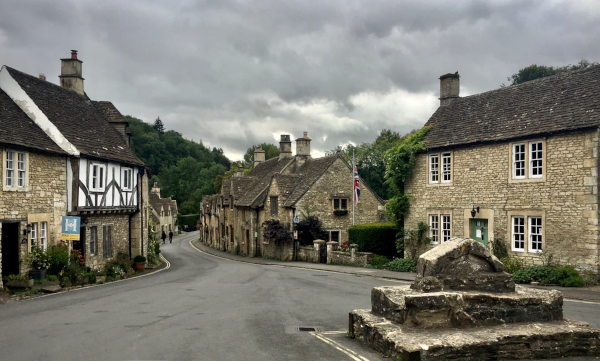
In the southern area Castle Combe is a good village to visit if you want a taste of a typical Cotswold Village handy to combine with Bath (only 30 minutes away) or even Stonehenge.
Set in a deep river valley the village (an old wool town) has tea rooms, interesting church, picturesque houses and river running through the village with very good walking in the district to other villages.
There is no castle left at Castle Combe; however you do have one of the least uncommercialised of the Cotswolds villages without the tour coach crowds of some other villages further north. Additionally, many of the properties are hundreds of years old and are listed as ancient monuments.
Lacock
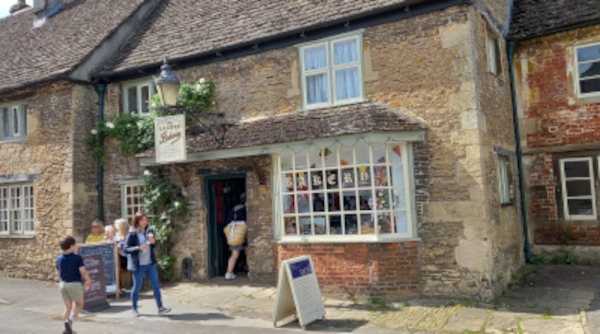
One of the prettiest villages in England, owned by the National Trust – a village ‘frozen in time’. Lacock is not really a typical Cotswold village. The houses span the centuries, dating from medieval times to the 18th century, but none is later than about 1800.
The George Inn, an authentic 13th century inn, offers a great place to have lunch and holds the title of the oldest licensed pub in England. Many period films, including Jane Austen and more recently Harry Potter, have used the village.
Lacock Abbey, beside the village is one of the few abbeys to survive Tudor times. Visit our Lacock page For more information.
Central Cotswolds
From London the central area of the Cotswolds is most popular. Oxford and nearby Blenheim Palace is a major gateway to the region.
Burford
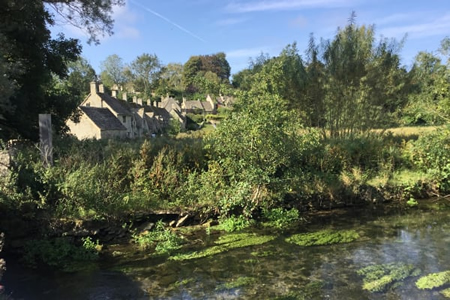
For many people, Burford, another old wool town, is the gateway town into the Cotswolds. One of the larger conurbation’s, the main High Street descending down to the river with some of its best 17th and 18th century frontages is the main focus for visitors. Burford is a renowned centre for antiques, teashops and gift shopping.
Bourton-on-the-Water
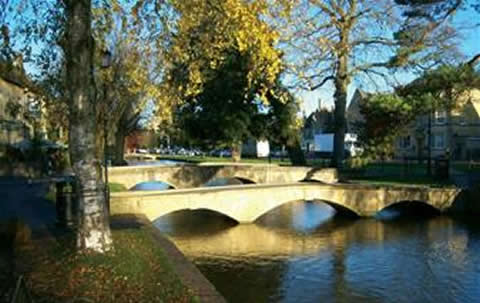
Probably the most popular village in the Cotswolds, and often referred to as the “Venice of the Cotswolds” because the River Windrush runs right through the centre. The sparkling water and the attractive low bridges crossing it create a charming scene.
The Slaughters
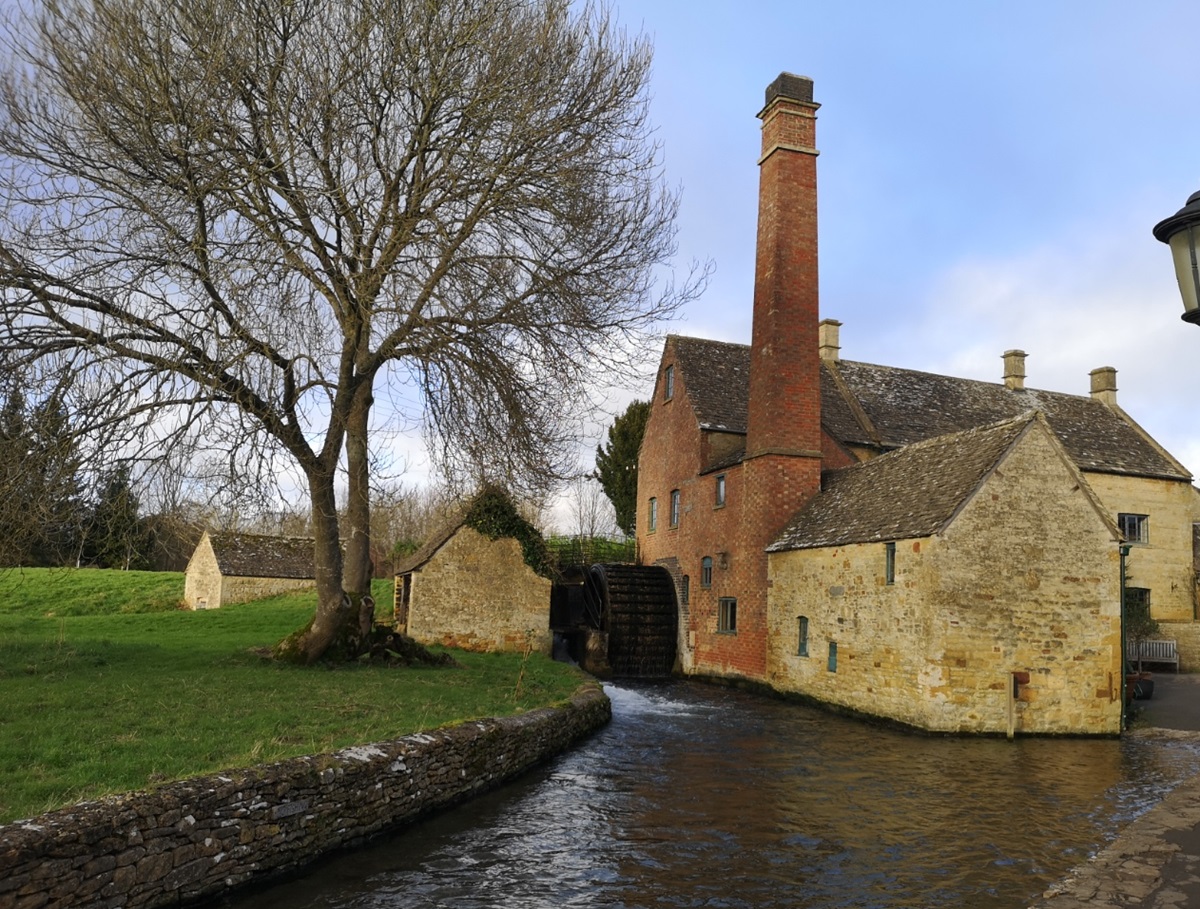
Only a couple of miles from Bourton-on-the-Water, Lower Slaughter is just off the Roman Fosse Way and a wonderfully conserved typical Cotswold village, with a Water Mill and ducks on the stream – a wander alongside the stream seems like a privilege.
Upper Slaughter is equally attractive with old cottages and farmhouses, and a Manor House now a hotel.
Stow-on-the-Wold
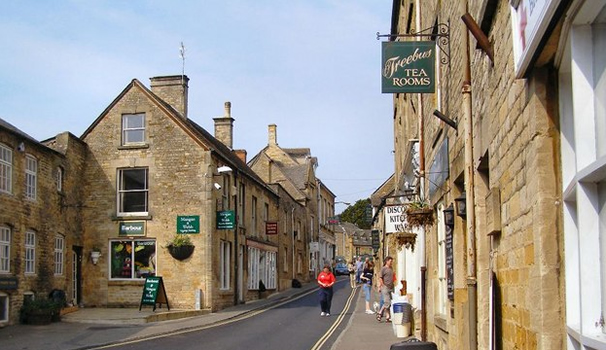
Famous as a centre for antiques, Stow-on-the-Wold, situated on the Roman Fosse Way, has a long history and probably dates from a prehistoric fortified settlement on top of the hill.
The Market Square is large and impressive and, surrounded by houses, shops and inns all built in the local Cotswold stone, it gives the feeling of being the focus of town life over many centuries.
At nearly 800ft, Stow-on-the-Wold is the highest of the Cotswold towns, approached uphill from all directions.
Bibury
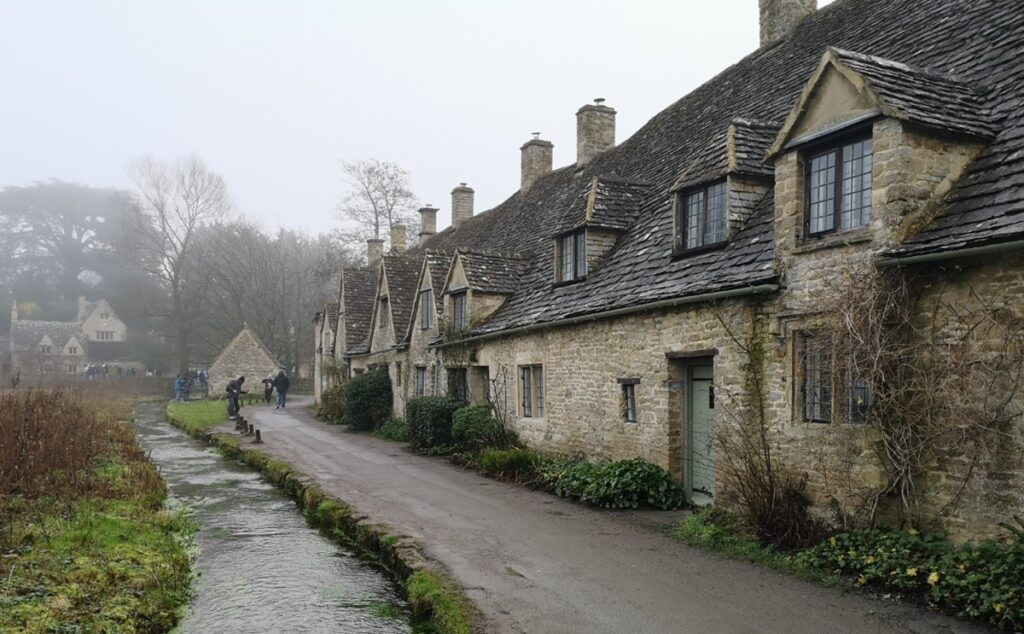
William Morris called Bibury “the most beautiful village in England” and it remains most attractive in its setting alongside the river.
The 14th century Arlington Row provides the focal point. This was originally a wool store, then altered into weavers cottages and is now restored by the National Trust. The low roof line and row of gables give it true Cotswold style.
Northern Cotswolds
From London most people venturing to the northern part of the Cotswolds, the furthest part away from London, will combine a visit with Shakespeare’s Stratford Upon Avon or Warwick Castle.
Broadway
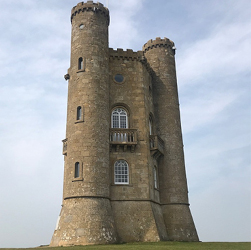
Picture perfect with its honey-coloured Cotswold stone buildings, Broadway is one of the most picturesque of the Cotswold villages.
Its chocolate box looks you could be stepping onto a film set. With a wide range of antique and high quality shops, spectacular scenery and with lovely places to stay.
Fish Hill provides the impressive backdrop to Broadway and on top stands Broadway Tower, a 65 foot (20m) high folly. From the tower spectacular views of 12 counties can be enjoyed.
Moreton-in-Marsh
Located at the head of the beautiful Evenlode valley, Moreton is a thriving market town dating back 1000 years. Every Tuesday Moreton-in-Marsh hosts the largest open-air street market in the Cotswolds.
Snowshill
The village is known for its exceptional unspoilt beauty and for the views over the Severn Vale to the west. Charmingly set near the Worcestershire border, the Cotswolds rise to over 900ft around the village on three sides.